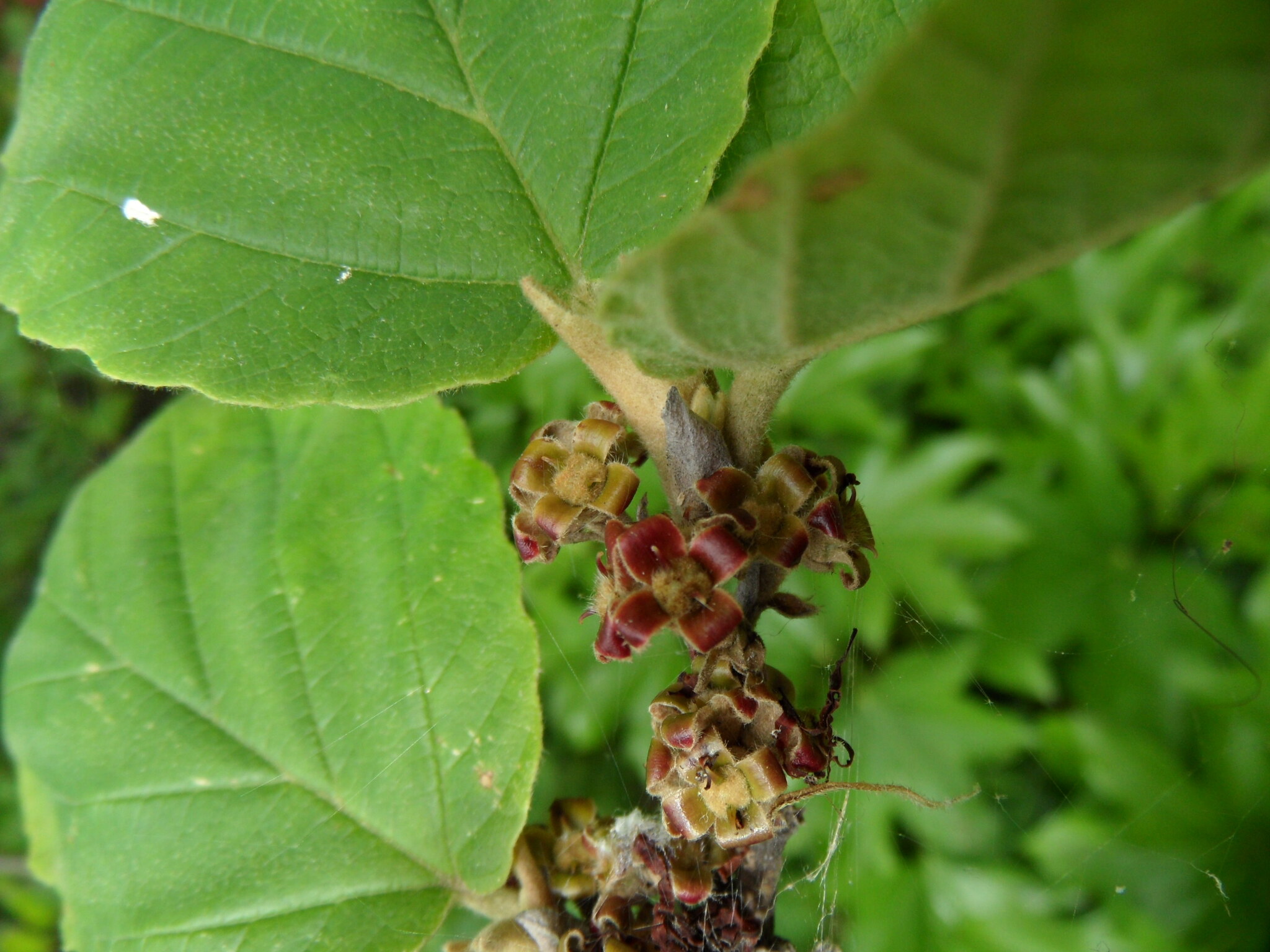
Ancient Greek name.
Deciduous shrubs or small trees with star-shaped hairs (lens). Leaves alternate with an uneven base, widely spaced teeth and short stalks. Flowers 3-4 together, mostly bisexual in axillary short-stalked spidery clusters, strongly scented. Sepals 4. Petals 4, strap-like, crumpled in bud, yellow to orange-red. Stamens 4, short. Carpels 2, united. Ovary semi-inferior, chambers 2, each with 1 ovule, styles 2. Fruit a woody 2-seeded capsule.
Seed (2 years germination), layers, grafting (generally using H. virginiana stock).
Bark the source of various medicinal compounds; flower extracts used in perfumery.
Leaves similar to those of the Hazel, Corylus, but the bases unequal. Flowers open before or after the leaves.
4 species from temperate E North America and E Asia.
Lancaster (1970, 1976).
Source: (1997). Hamamelidaceae. In: . Horticultural Flora of South-eastern Australia. Volume 2. Flowering plants. Dicotyledons. Part 1. The identification of garden and cultivated plants. University of New South Wales Press.
